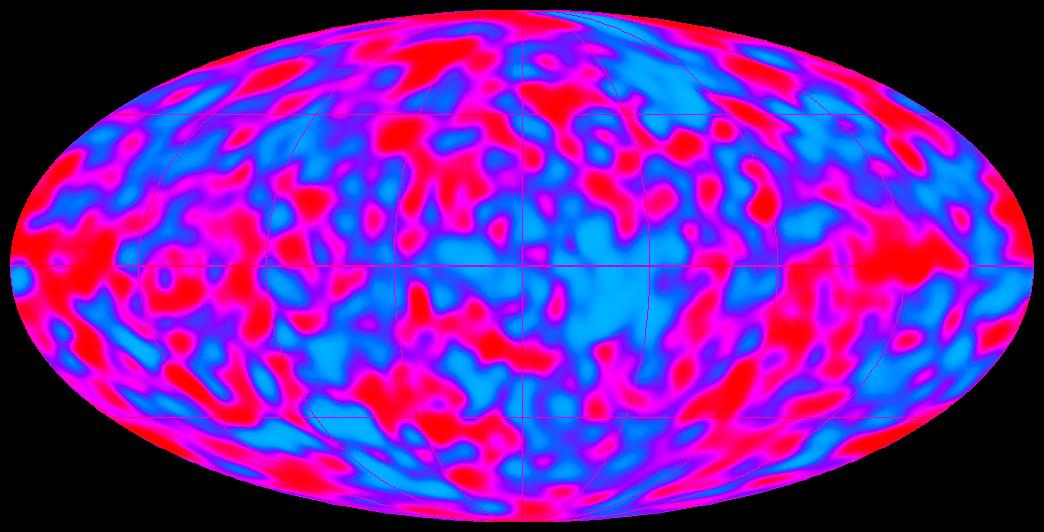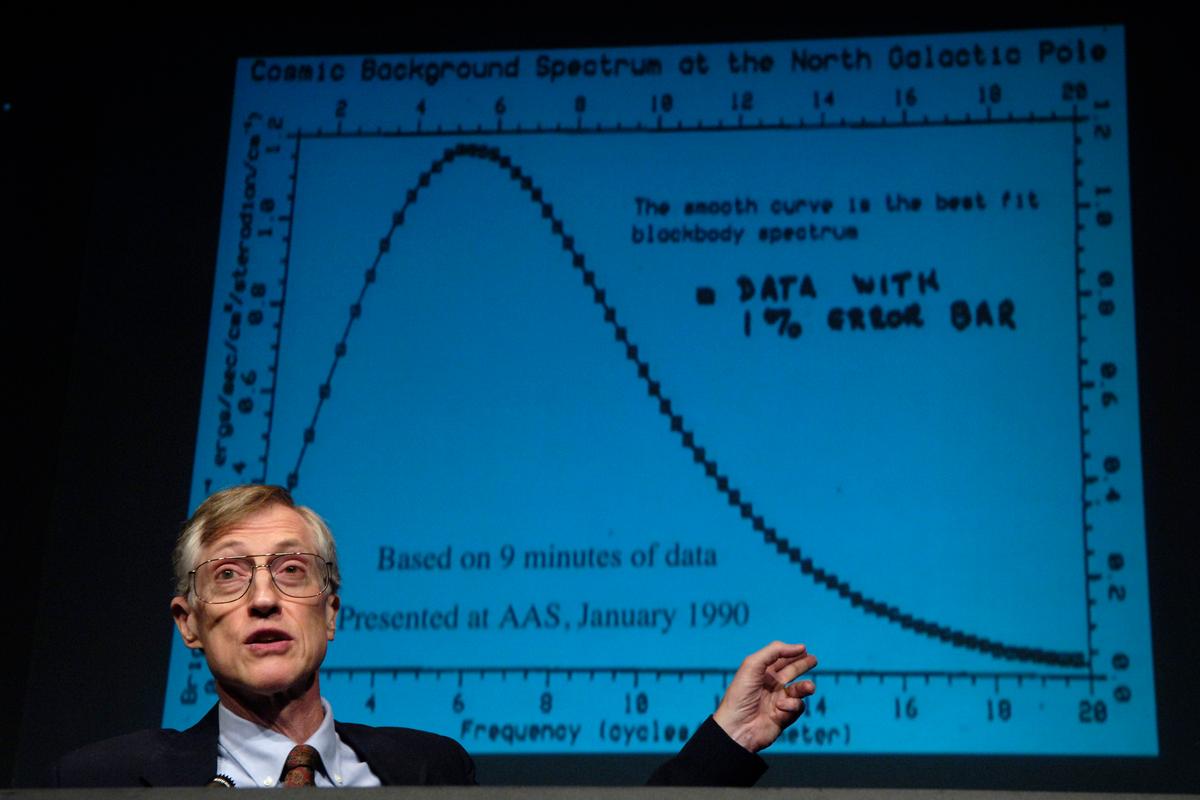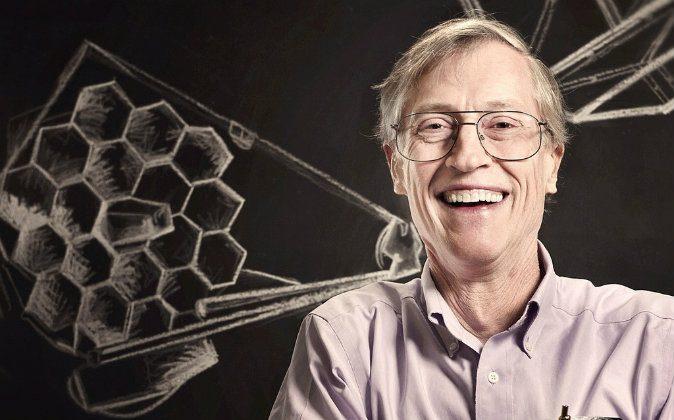Dr. John C. Mather won the 2006 Nobel Prize in physics along with George F. Smoot for their important contribution to the understanding of the Big Bang. Mather is part of the Nobel Laureate School Visits program, a partner organization of the 2014 USA Science & Engineering Festival in Washington, D.C., taking place April 26–27, 2014. Epoch Times is a media sponsor of the festival, so expect more great coverage to come!
When we look into space, we see things as they were thousands or billions of years ago, not as they are now. Astronomers look back in time.
If something is a billion light years away, it means telescopes on Earth are receiving the light that has traveled here from that region of the cosmos over the course of a billion years.
“We get a very blurry view,” said senior NASA astrophysicist John Mather in a lecture earlier this year at the University of California–Berkeley. So science can only understand the cosmos “with telescopes and great calculation and imagination,” he said.
In an interview with Epoch Times, Mather described some of the amazing discoveries he has made with telescopes, calculations, and imagination. He also described what he envisions for the future of space exploration.
Shining Light on the Big Bang

A map of the cosmic microwave background. (NASA)
Mather led the Cosmic Background Explorer (COBE) Mission in the late 1980s, early 1990s. It was a mission to measure the primordial radiation from the Big Bang. This radiation is known as the cosmic microwave background. Mather and his team found their measurements lined up with the predictions of the Big Bang theory, providing significant evidence to support the theory. Their measurements showed a burst of energy in the first instants after the Big Bang with only a fraction of the energy released thereafter.
When he presented his little chart of results in 1990 a large room full of his peers, he got a standing ovation. Scientists get standing ovations about as often as theater performers get Nobel prizes.
“It was more important than I ever guessed,” Mather said. Immersed in the work, the results didn’t seem so surprising to him. Two years later, the team announced the discovery of hot and cold spots in the primeval radiation. Stephen Hawking said of that work, “This is one of the most important scientific discoveries of the century, if not of all time.”

NASA scientist Dr. John C. Mather shows some of the earliest data from the NASA Cosmic Background Explorer (COBE) spacecraft during a press conference at NASA Headquarters in Washington, D.C., held on Oct. 6, 2006. (Bill Ingalls/NASA)
Mather’s Nobel prize in 2006 was followed by many accolades. Time magazine named him one of 2007’s most influential people. His star-status in the astronomy world and beyond did not, however, launch the modest scientist to over-lofty heights.
“I’m not that comfortable being a celebrity,” he said. “Of course, I’m very well aware that I speak for a team.” He said some 1,500 people were working on the mission, and they also deserve much credit.
Mather’s work has its place in the history of science. In his Berkeley lecture, he discussed the discoveries that lead up to his. In his interview with Epoch Times, he discussed the discoveries that have followed and those that are now perhaps just beyond our reach.
Looking Back
American physicist Albert A. Michelson won a Nobel Prize in physics in 1907 for his optical precision instruments and investigations carried out with their aid. Michelson’s work informed Mather’s research.
Michelson provided a great stepping stone in the history of science, but he was much mistaken in thinking the science of his time would remain more or less unchanged.
Mather cited a quote often attributed to Michelson: “The more important fundamental laws and facts of physical reality have all been discovered and they are now so firmly established that the possibility of their ever being supplanted in consequence of new discoveries is exceedingly remote … Our future discoveries must be looked for in the 6th place of decimals.”
Of course, scientists have made great leaps in understanding since that time. Noting Michelson’s mistaken outlook, Mather joked that his own predictions for the future could be well off the mark.
What’s Going to Happen Next
Scientists are working to verify the latest leap forward in understanding the Big Bang. In March, a team at the Harvard-Smithsonian Center for Astrophysics stirred up much excitement; they announced that they had found likely evidence of the rapid expansion of matter in the very first moments following the Big Bang. This expansion is known as cosmic inflation. If confirmed by further measurements and peer review, some speculate that the finding could earn a Nobel Prize.
“What was completely impossible to test isn’t anymore,” Mather said.
Great mysteries remain, of course. Dark matter, dark energy, and alien life are three such mysteries that intrigue Mather.
Scientists don’t know what exactly dark matter is, but they know there’s a lot of it in space, and the equally mysterious dark energy is a force affecting the universe’s expansion.
Mather mentioned experiments in which scientists are looking for dark matter underground on Earth. As for dark energy, Mather thinks that in 20 years or so, with bigger and better apparatus, we will be able to measure it much better. As for the long-term outlook of space exploration, he said an important question is “Are we the only ones here?”
“I feel that there’s life out there,” he said. He is interested to see what further investigations on Mars uncover, and he looks forward to bigger and better telescopes that can help search for oxygen on other planets.
Working on the Next Big Telescope
Mather is currently working on developing the James Webb telescope, hailed by NASA as “the premier observatory of the next decade, serving thousands of astronomers worldwide.”
It is due to be launched into space in 2018, and it will be in orbit deeper in space than the Hubble telescope. The Webb will sit at 930,000 miles (1.5 million kilometers) from Earth, and farther away from the sun. It will observe infrared light from faint and very distant objects.
In his Berkeley presentation, Mather recalled how much has been revealed in the past few decades. In the 1980s, we weren’t sure black holes existed; we weren’t sure how stars explode and we didn’t know much about their birth; we saw only empty space in some regions where our apparatus could not easily detect the multitude of distant galaxies.
What will we see as we continue to gaze into space? Telescopes, calculations, and imagination could open up expansive new worlds.

A diagram (not to scale) shows the planned location of the James Webb telescope. (NASA)
Mather looks forward to attending the USA Science & Engineering Festival, because the event can show the public how interesting science is. It supplements science education well, showing “people who are interested can learn a lot by themselves,” Mather said. As a Nobel laureate who gives talks to students, he is keenly interested in opening up science to the general public.
See more articles on the USA Science & Engineering Festival.






Friends Read Free